Seabird flight height data collection at an offshore wind farm: final report
Understanding seabird flight heights and behaviour in and around operational offshore wind farms is a priority knowledge gap. Using aircraft mounted LiDAR technology, this study collected data on seabird flight height and shows the potential for using it in offshore windfarm impact assessments.
Appendix V. Species Specific Histograms for Distance to Nearest Turbine (m)
Survey 1 Histograms
Histograms demonstrate the distribution of distance to nearest wind turbine (m) for each species recorded as flying during survey 1 (June 2021). In June this included eight species and three species groups, including guillemot (n=757), kittiwake (n=261), fulmar (n=53), gannet (n=45), razorbill (n=32), herring gull (n=26), guillemot / razorbill (n=8), great skua (n=3), great black-backed gull (n=2), auk / shearwater species (n=1), and auk species (n=1). Histograms were not created where less than three individuals of each species were recorded (great black-backed gull, auk / shearwater species and auk species).
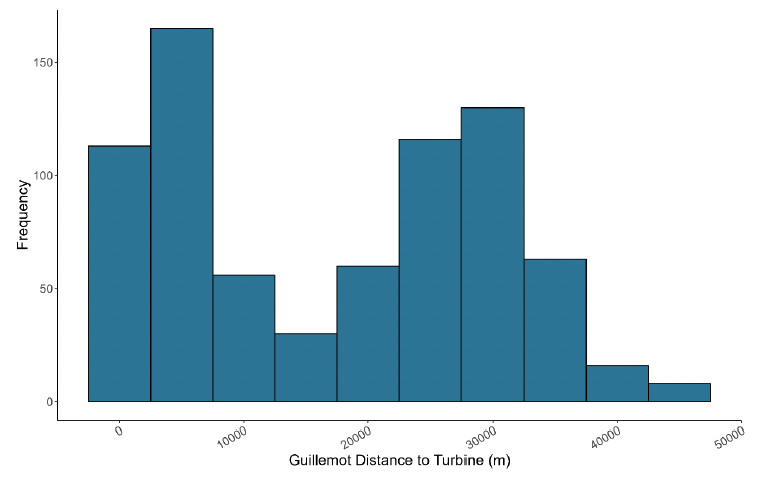
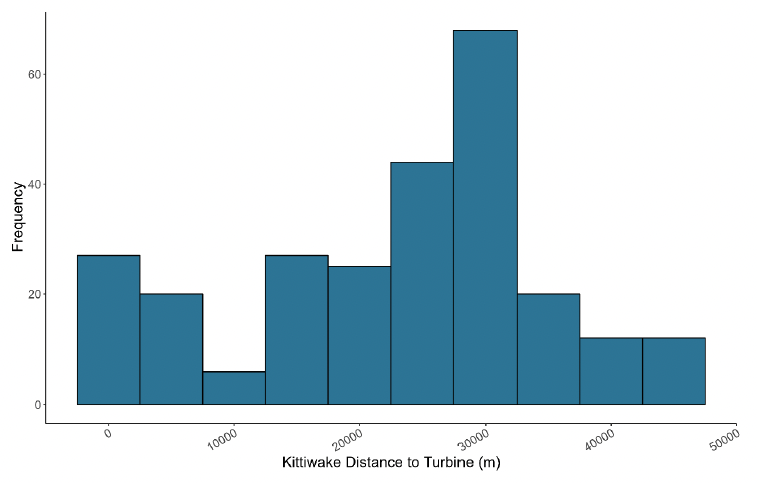
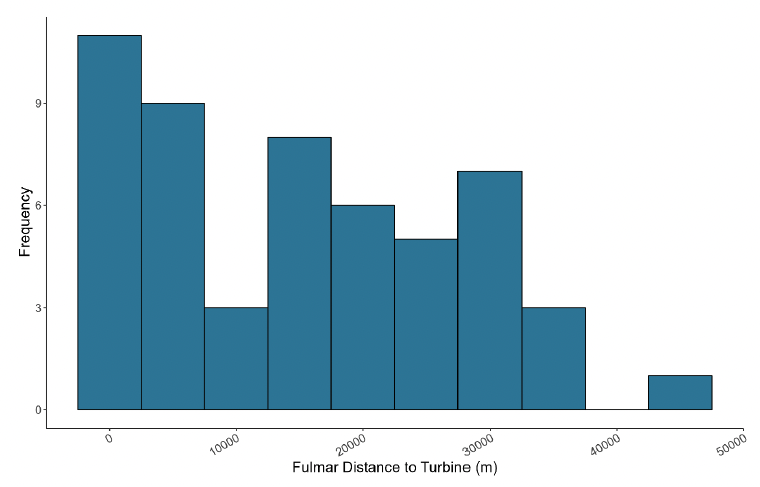
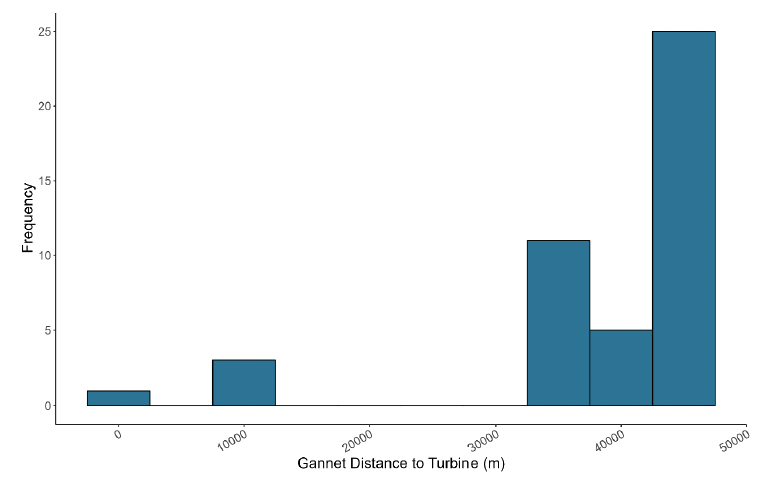
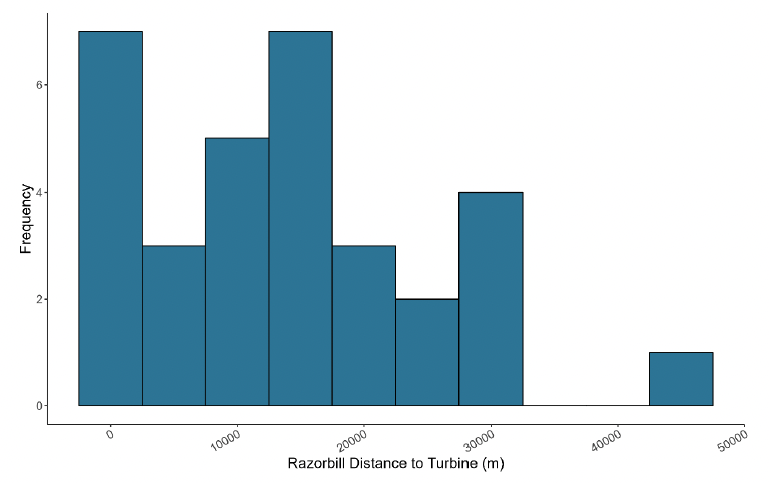
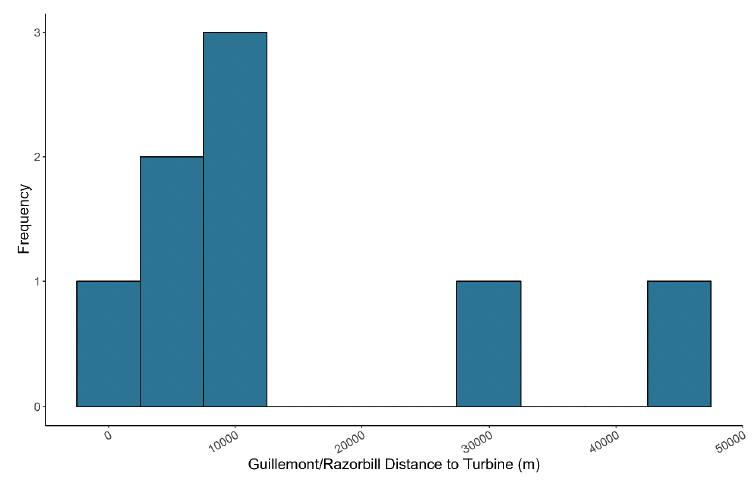
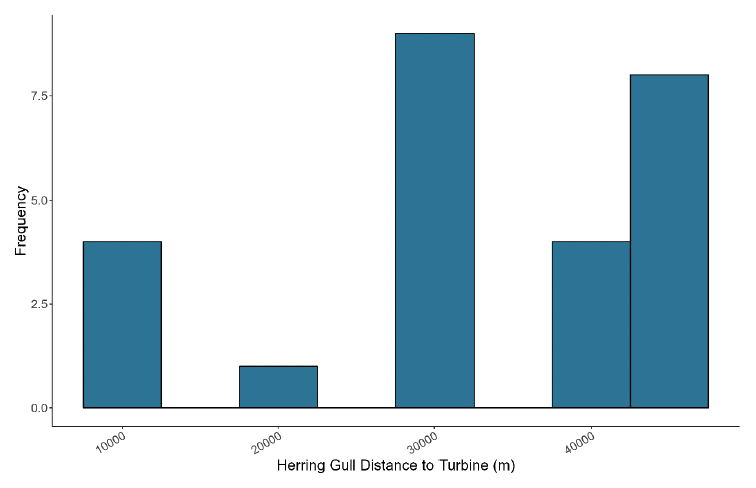
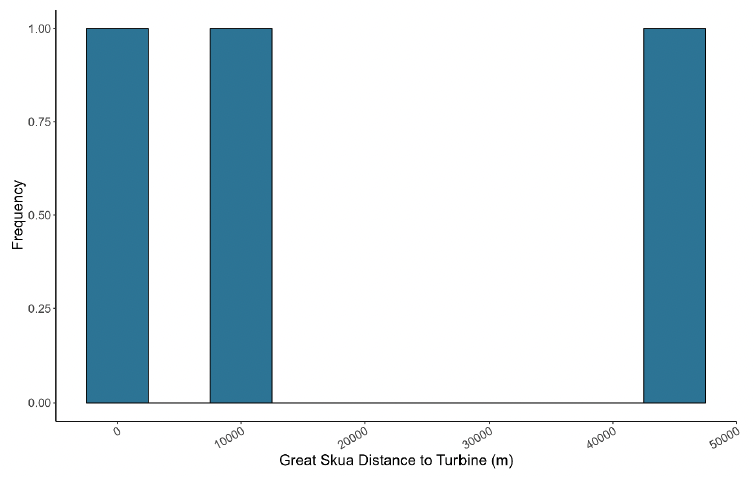
Survey 2 Histograms
Histograms demonstrate the distribution of distance to nearest wind turbine (m) for each species recorded as flying during survey 2 (July 2021). In July this included nine species and two species groups, including guillemot (n=595), kittiwake (n=435), fulmar (n=70), gannet (n=18), herring gull (n=21), guillemot / razorbill (n=21), great skua (n=6), great black-backed gull (n=3), Manx shearwater (n=1), puffin (n=1) and unidentified bird species (n=1). Histograms were not created where less than three individuals of each species were recorded (Manx shearwater, puffin and unidentified bird species).
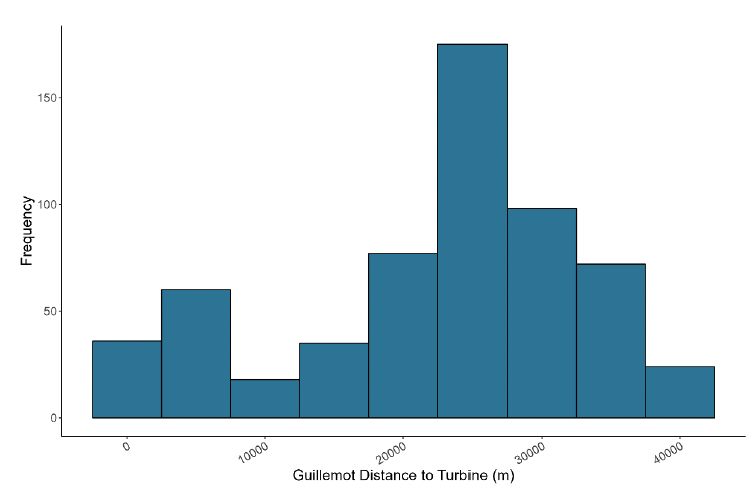
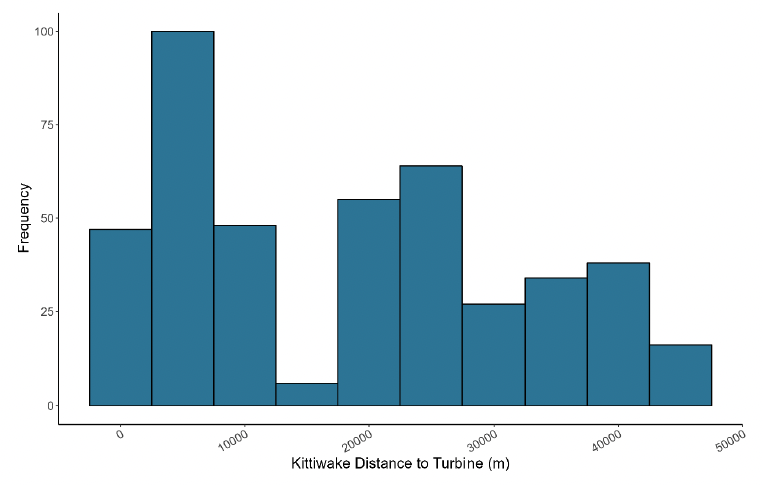
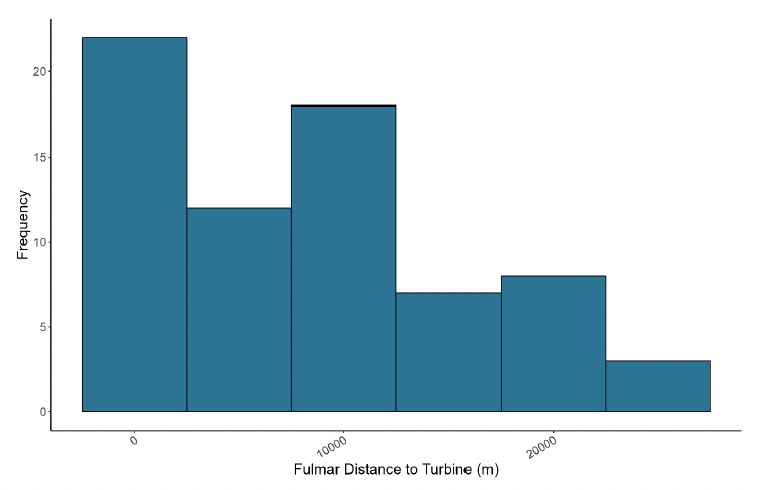
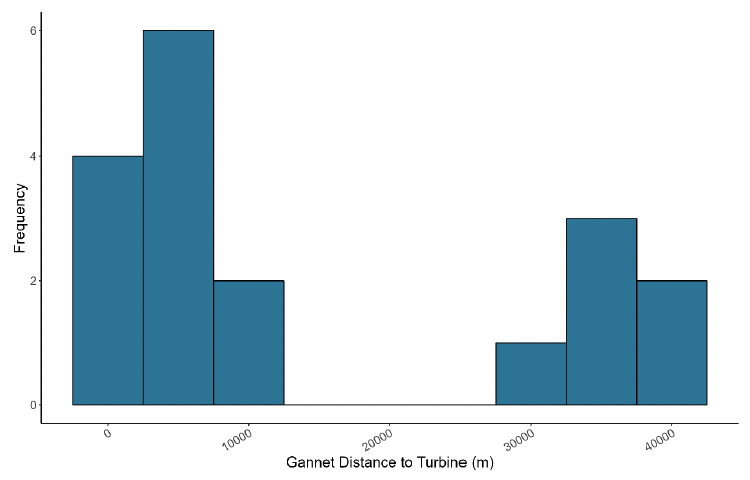
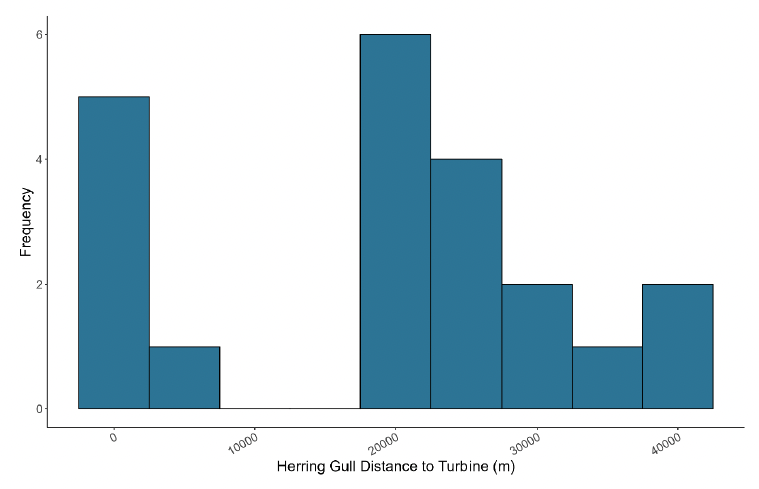
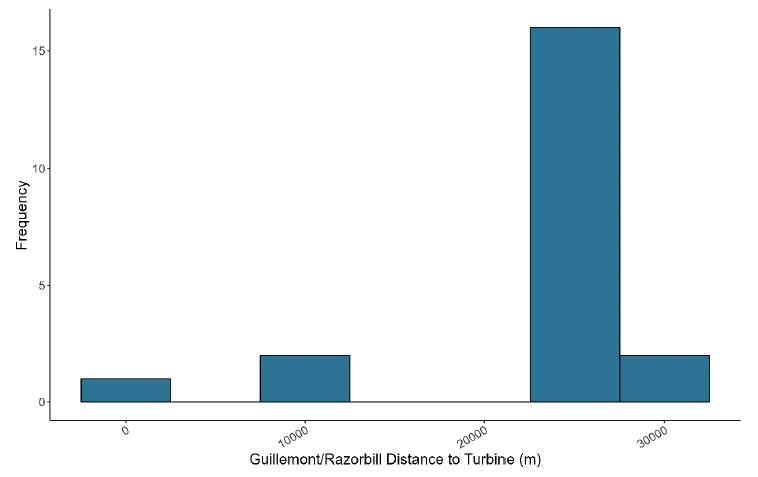
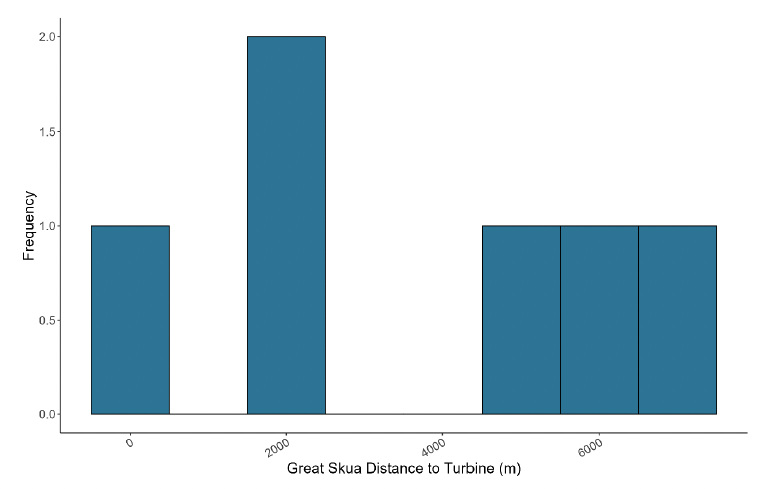
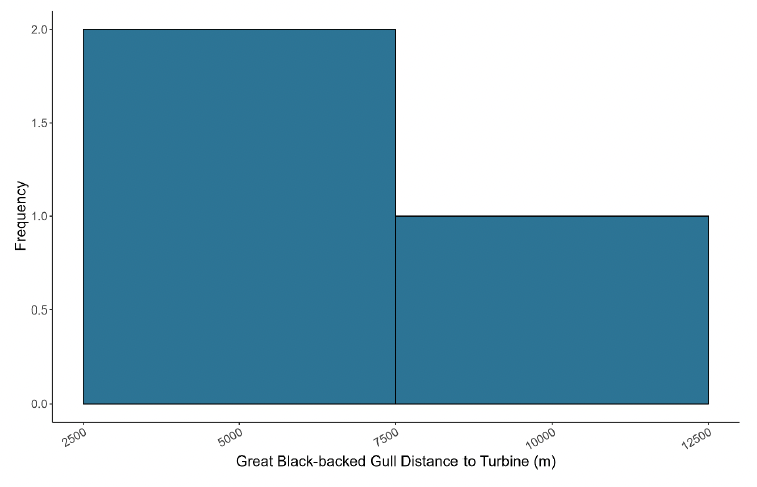
Contact
Email: REEAadmin@gov.scot
There is a problem
Thanks for your feedback